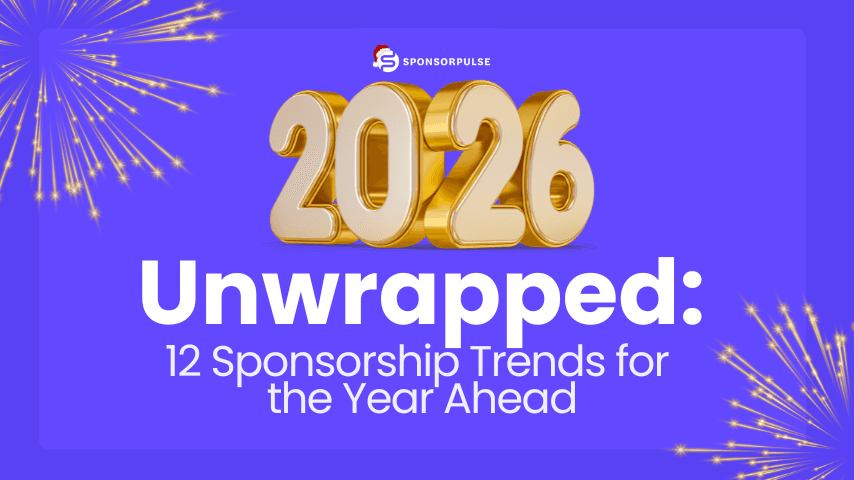Building a Strong Business Case for Sponsorship Investment

Securing sponsorship investment requires more than a great pitch; it demands a data-driven business case that clearly outlines the expected return and justifies the decision.
A well-crafted business case clarifies the benefits of sponsorship and provides a compelling argument for ROI—both essential to securing stakeholder support. Here’s our cheat sheet for building a strong case for sponsorship investment.
Understanding Passion Points and Fan Bases
To begin building your business case, start by identifying the passion points of your target audience. Passion points are the areas of life—whether sports, music, or charity—that engage fans on a deep emotional level. The Chicago Bears, for example, have a fan base of over 5.5 million people, representing 64% of Illinois residents. Of these fans, 53% are excited about the team, 37% have growing interest, and 28% are deeply passionate. This level of engagement presents a unique opportunity for sponsors, as it allows brands to connect with a highly motivated audience that has strong emotional ties to their team. Tapping into these fan sentiments helps maximize the value of the sponsorship and strengthens the brand’s connection with potential customers.
Evaluating Target Efficiency and Category Impact
Once you’ve identified the fan base, it’s important to evaluate how well your target audience aligns with the sponsorship. This can be done by analyzing consumer segments that are most likely to engage with the sponsorship. For example, 35% of Illinois residents who buy lottery tickets are more likely to engage with Bears’ sponsors, which is 13% higher than the general population. Other categories showing a strong correlation include alcoholic beverages (35%, +13%), furniture (32%, +10%), and sports betting (30%, +8%). By identifying these overlaps, sponsors can focus their resources on the most responsive groups, increasing the chances of driving conversions and making the most of their investment.
Determining Fair Market Value
Keenly understanding the fair market value of a sponsorship helps gauge expected investment levels and ensures that the decision aligns with your brand’s budget. The cost of a sponsorship with the Chicago Bears, for instance, ranges from $4.9 million to $7 million, while partnering with teams like the Chicago Bulls or Blackhawks typically costs less—between $1.5 million and $4.6 million.
This information allows sponsors to make informed decisions based on their goals and budget, ensuring that they get the best possible value for their investment. Calculating the fair market value also provides insight into whether a sponsorship is affordable or if alternative opportunities may better fit the brand’s objectives.
Strategic Asset Activation
Activation is a critical part of any sponsorship’s success. It’s not enough to simply have a sponsorship deal in place; the right assets must be activated to ensure the brand reaches its target audience. This could include TV ads, social media campaigns, community events, or experiential marketing. In the Bears scenario, sponsoring a major Bears game and using social media to engage with fans before, during, and after the event can significantly amplify brand visibility.
For a lottery ticket brand, a powerful activation could involve running a social media campaign where fans can enter a contest for a chance to win tickets to the game, or a VIP experience. During the game, they could set up an experiential booth at the stadium, where attendees can purchase lottery tickets or engage in interactive games, offering instant-win prizes. Aligning these activations with fan excitement and the thrill of winning connects the brand to the energy and passion of the Bears' fan base, creating memorable experiences that resonate with the audience.
Benchmarking Potential Impact
To assess the effectiveness of a sponsorship, setting clear and realistic benchmarks is essential. Brands should measure outcomes such as increased brand awareness, favorability, and purchase intent to determine the success of the sponsorship. On average, sports sponsorships can result in a 43% increase in brand awareness, a 40% increase in favorability, and a 35% increase in purchase intent. With effective activation and strategic planning, however, these numbers can rise significantly—up to 74% for brand awareness, 52% for favorability, and 45% for purchase intent.
These benchmarks not only provide a concrete way to evaluate the sponsorship’s impact, but also allow brands to adjust their strategies if necessary to drive better results. By setting clear expectations and tracking progress, stakeholders can better understand the potential of the sponsorship, ensuring that the investment delivers the desired return.


